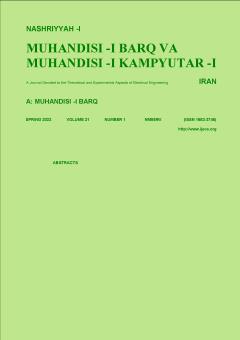-
-
List of Articles
-
Open Access Article
1 - Finite-Control-Set Model Predictive Control of an Active Front-End Rectifier with Dynamic References and Comparison with MPDPC Method
Ayyoub Keshvari Mohammad Reza Alizadeh Pahlavani Arash Dehestani Kolagar -
Open Access Article
2 - Regional Power-Aware Routing for Partially-Connected 3D Network-on-Chip
Mitra Moalemnia HadiShahriar Shahhoseini -
Open Access Article
3 - Fixed-Time Consensus of Fractional-Order Single Integrator Multi-Agent Systems
Hossein Zamani وحيد جوهري مجد Khosro Khandani -
Open Access Article
4 - Energy Management of Micro-Grids and Their Harmonic Compensation Through Shunt Active Filter Based on Multi-Agent Systems
Mohammad-Reza Salehi Rad Mohammad Mollaie Emamzadeh -
Open Access Article
5 - Determination of Available Transfer Capability by Combined Method of Newton-Raphson-Seydel and Holomorphic Load Flow with Improved Matrix Calculations
Mostafa Eidiani -
Open Access Article
6 - Integrated Fault Estimation and Fault Tolerant Control Design for Linear Parameter Varying System with Actuator and Sensor Fault
Hooshang Jafari Amin Ramezani Mehdi Forouzanfar -
Open Access Article
7 - Design and Simulation of a Low Power and High-Speed CMOS Double-Tail Comparator
Akbar Heidaritabar habib Adarang seyed saleh Ghoreishi Reza Yousefi -
Open Access Article
8 - Optimum Design and Full-Wave Analysis of Broad-Band Metamaterial Absorbers in the Visible Light Spectrum
Mortaza Nazari Amir Habibzadeh-Sharif Mohammad Eskandari
-
The rights to this website are owned by the Raimag Press Management System.
Copyright © 2017-2025







